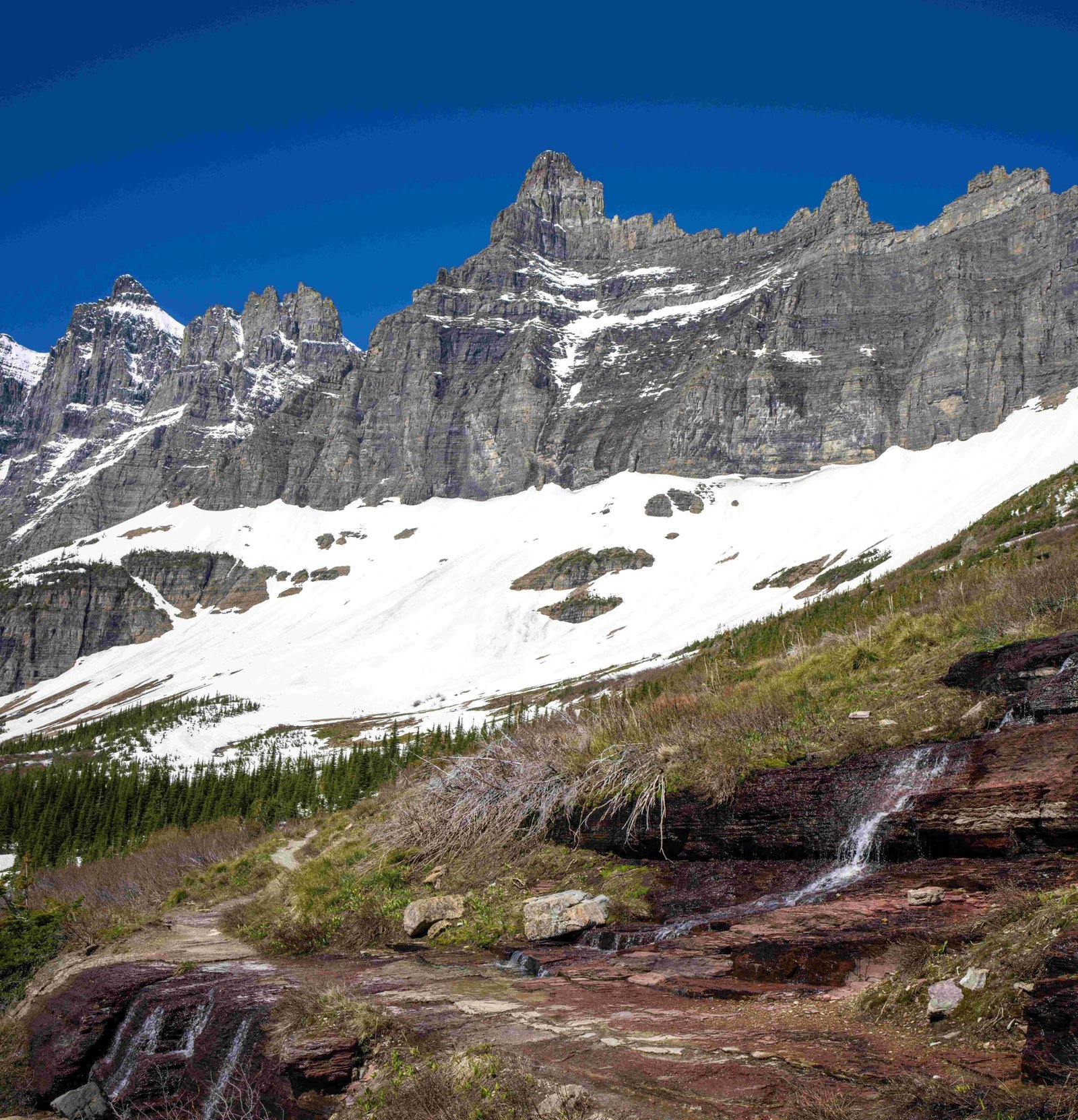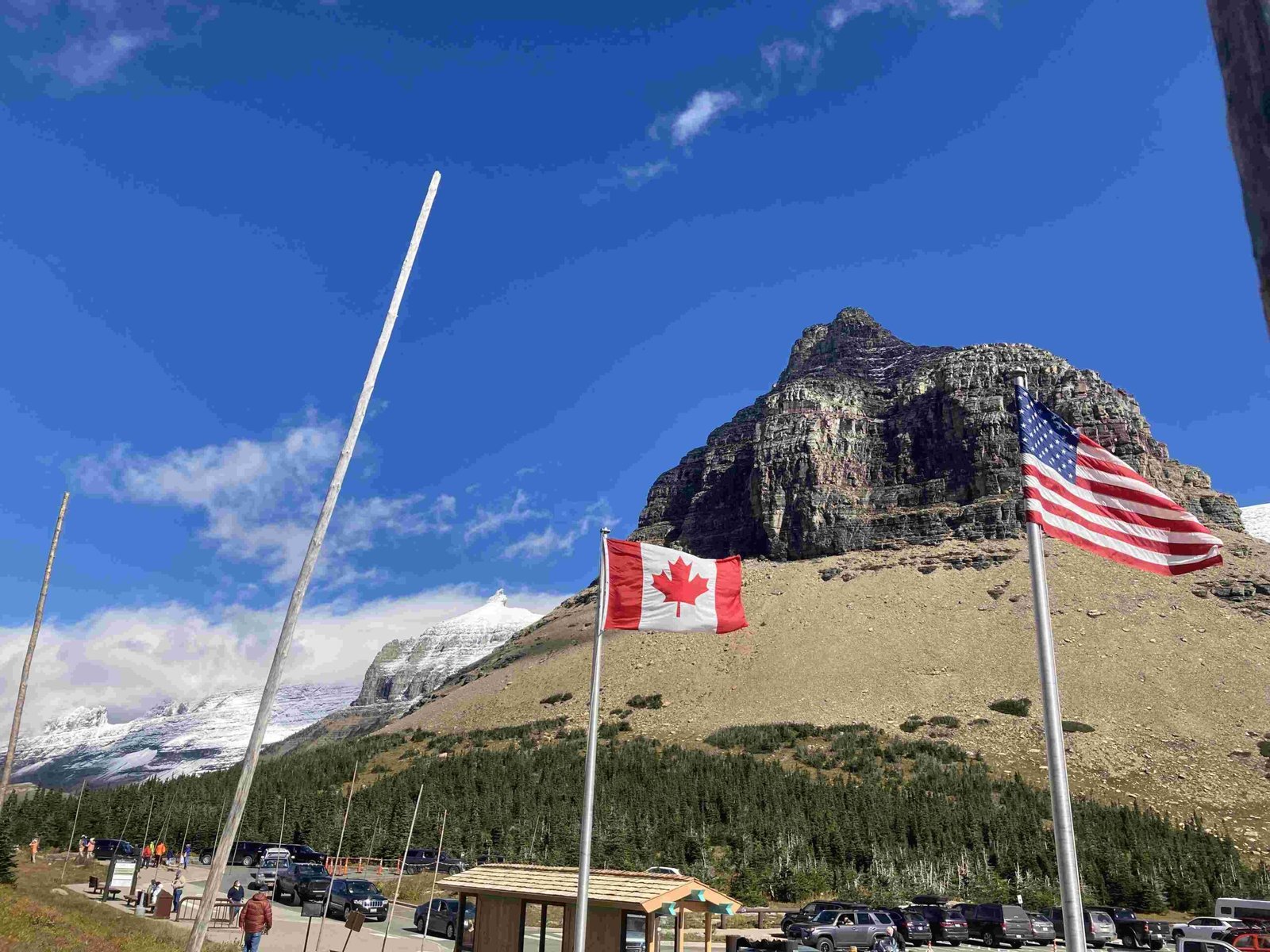Glacier National Park’s current snow levels vary significantly across different elevations and locations. As of October 19, 2024, lower elevations like Many Glacier show no snow accumulation, while higher areas maintain some snowpack. The West Glacier Park TB20 SNOTEL station reports a consistent snow water equivalent of 14.7 inches. These conditions impact winter activities, trail accessibility, and overall park visitation during the colder months.
What Are the Latest Snow Measurements at Key Locations?

Many Glacier SNOTEL Station
- Elevation: 4,900 feet
- Snow depth: 0.0 inches
- Snow water equivalent (SWE): 0.0 inches
- Last updated: October 19, 2024
West Glacier Park TB20 SNOTEL Station
- Elevation: 3,154 feet
- Snow water equivalent (SWE): 14.7 inches
- Last updated: October 18, 2024
- Note: Recent snow depth data unavailable
Flattop Mountain SNOTEL Station
- Elevation: 6,300 feet
- Note: Specific recent data not provided, but typically experiences higher snow levels due to its elevation
How Do Current Snow Levels Compare to Historical Averages?

To accurately assess how current snow levels in Glacier National Park compare to historical averages, we would need access to long-term data sets. Unfortunately, this information is not provided in the available sources. However, we can make some general observations:
- Lower elevations (e.g., Many Glacier) currently show no snow accumulation, which may or may not be typical for mid-October, depending on the year.
- The consistent SWE reading at West Glacier Park TB20 suggests some snowpack, but without historical context, it’s difficult to determine if this is above or below average.
- Higher elevations, like Flattop Mountain, typically accumulate snow earlier and in greater amounts than lower areas.
To get a more accurate comparison, it would be necessary to:
– Analyze multi-year data for each station
– Consider factors such as El Niño/La Niña cycles
– Take into account long-term climate trends affecting the region
What Factors Influence Snow Accumulation in Glacier National Park?
Several factors contribute to snow accumulation patterns in Glacier National Park:
- Elevation: Higher elevations generally receive more snow and retain it longer.
- Topography: Mountain slopes and valleys can affect snow distribution.
- Prevailing winds: Wind patterns can influence where snow accumulates or erodes.
- Proximity to moisture sources: Areas closer to the Pacific Ocean may receive more precipitation.
- Temperature fluctuations: Freeze-thaw cycles can impact snow depth and consistency.
- Solar exposure: South-facing slopes may experience more melting than north-facing areas.
How Do Current Snow Levels Affect Winter Activities in the Park?
The current snow levels in Glacier National Park have significant implications for winter activities:
Skiing and Snowboarding
- Limited options at lower elevations due to lack of snow
- Potential for backcountry skiing at higher elevations, but conditions may vary
Snowshoeing
- Possible on trails with adequate snow cover
- May be restricted to higher elevation areas
Winter Hiking
- Accessible on lower elevation trails with little to no snow
- Microspikes or other traction devices may be necessary on icy paths
Ice Climbing
- Dependent on consistent cold temperatures and adequate ice formation
- Current conditions may not be ideal at all locations
| Activity | Feasibility | Notes |
|---|---|---|
| Skiing | Limited | Best at higher elevations |
| Snowshoeing | Moderate | Restricted to snowy areas |
| Winter Hiking | Good | Caution on icy trails |
| Ice Climbing | Variable | Check local conditions |
What Safety Considerations Are Important Given the Current Snow Levels?
Given the variable snow conditions in Glacier National Park, visitors should consider the following safety measures:
- Avalanche awareness: Even with limited snow, avalanche risk can exist in certain areas.
- Proper equipment: Carry appropriate gear for changing conditions (e.g., traction devices, avalanche safety equipment).
- Weather monitoring: Stay informed about rapidly changing mountain weather.
- Navigation skills: Be prepared for snow-covered trails and limited visibility.
- Hypothermia prevention: Dress in layers and stay dry, as cold temperatures can persist even with minimal snow.
- Wildlife awareness: Animals may be more active in areas with less snow cover.
How Might Snow Levels Change in the Coming Weeks?
Predicting future snow levels in Glacier National Park requires considering several factors:
- Seasonal patterns: Typically, snow accumulation increases as winter approaches.
- Short-term weather forecasts: Check local meteorological services for upcoming precipitation predictions.
- Long-term climate trends: Consider broader climate patterns affecting the region.
While specific predictions are not available in the provided sources, visitors should expect:
– Increasing likelihood of snowfall at all elevations
– Gradual build-up of snowpack, especially at higher altitudes
– Potential for rapid changes in conditions with passing weather systems
What Resources Are Available for Monitoring Snow Levels in Glacier National Park?
To stay informed about current snow levels in Glacier National Park, consider the following resources:
- SNOTEL Stations: Provide real-time data on snow depth and water equivalent.
- Many Glacier
- West Glacier Park TB20
-
Flattop Mountain
-
National Park Service Website: Offers updates on trail conditions and closures.
-
Local Weather Services: Provide short-term forecasts and weather advisories.
-
Avalanche Forecast Centers: Offer detailed reports on snowpack stability and avalanche risk.
-
Webcams: Some areas of the park may have webcams showing current conditions.
-
Visitor Centers: Staff can provide up-to-date information on local conditions.
By utilizing these resources, visitors can make informed decisions about their activities and ensure a safe and enjoyable experience in Glacier National Park during the winter months.